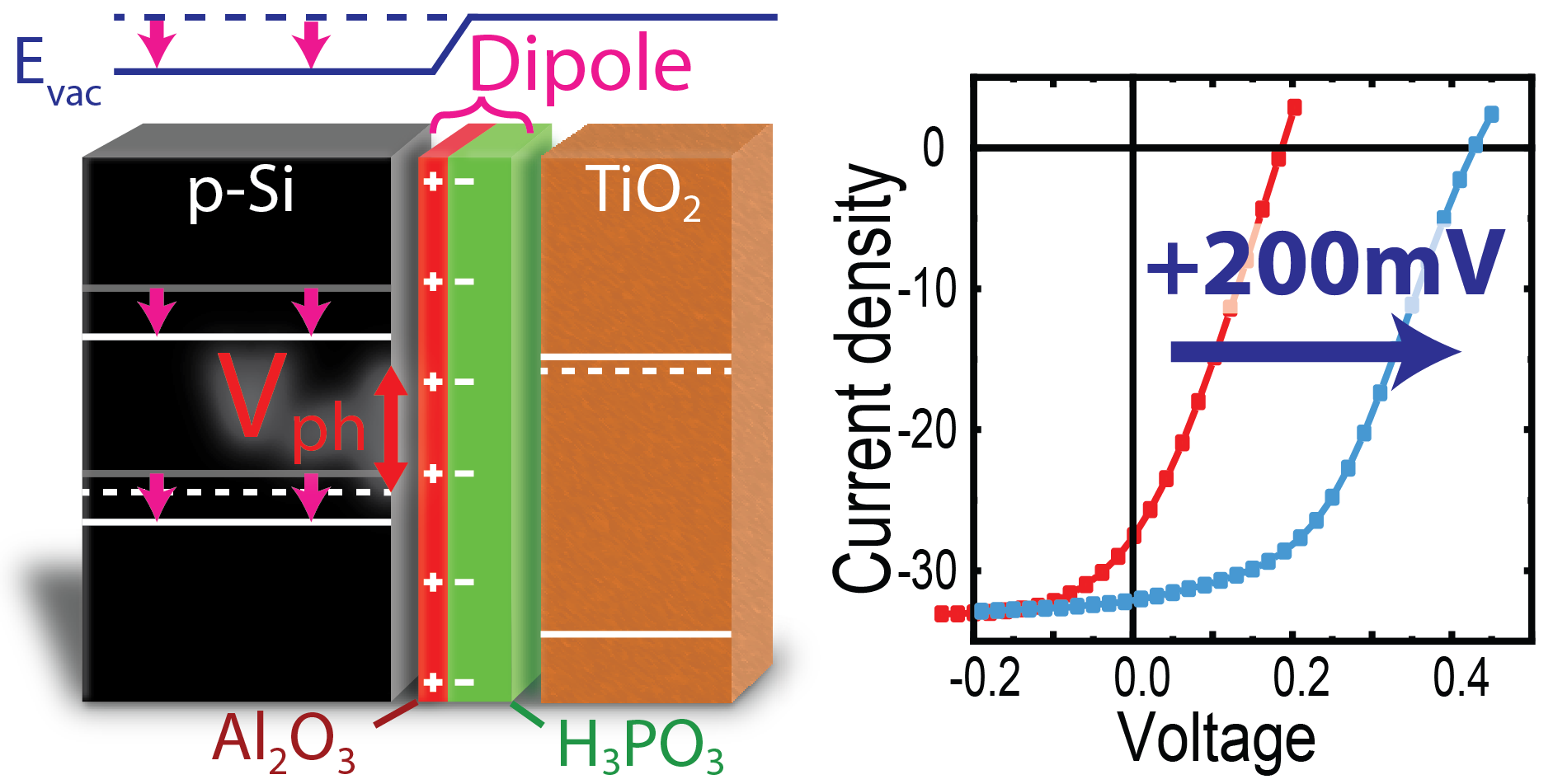Stable and tunable phosphonic acid dipole layer for band edge engineering of photoelectrochemical and photovoltaic heterojunction devices
Photoelectrochemical water splitting is performed in aqueous electrolyte. High performance semiconductors are not stable under those conditions and a corrosion protection layer, such as TiO2, has to be used. The photoabsorbing material and the TiO2 form a heterojunction and the photovoltage of such a device is usually small since most high performance semiconductors (e.g. Si) have a poor band alignment with TiO2. We present a method to overcome this limitation by placing a phosphonic acid (H3PO3) dipole layer in between p-Si and n-TiO2. The dipole induced band shift leads to an increase in photovoltage by 200 mV (see Figure).

We found that the photovoltage can be tuned by varying the thickness of the phosphonic acid layer, which was confirmed by DFT calculations. The versatility of the method was demonstrated by increasing the photovoltage of TiO2 protected emerging materials, Cu2O and Sb2Se3.
[1] René Wick-Joliat, Tiziana Musso, Rajiv Ramanujam Prabhakar, Johannes Löckinger, Sebastian Siol, Wei Cui, Laurent Sévery, Thomas Moehl, Jihye Suh, Jürg Hutter, Marcella Iannuzzi, S. David Tilley, Energy Environ. Sci., 2019, DOI: 10.1039/C9EE00748B.